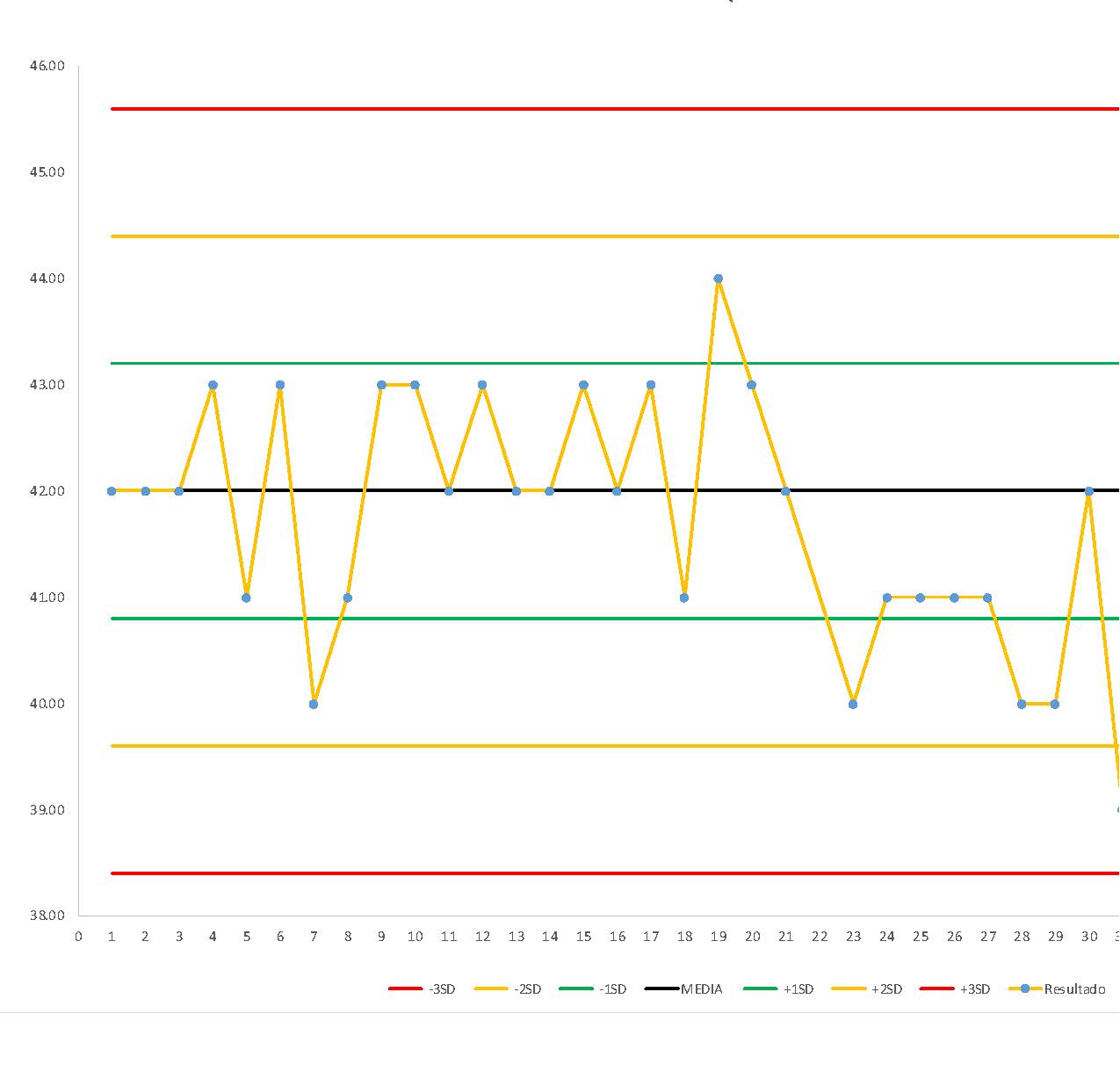Questions
What the Warning Rule Misses - differences in detection for different Westgard Rules
When you look at the classic Westgard Rules, there's a lesser-known wrinkle in how often some errors are detected.
Review the history of the 1:2s Warning Rule, why it went from rejection to warning, and see why it's now been eliminated from modern Westgard Rules and Westgard Sigma Rules.
What the Warning Rule Misses
Differences in Error Detection for different Westgard Rules
December 2023
Sten Westgard, MS
We got a recent question and image sent to us by one of our favorite colleagues. He points out a lesser known wrinkle in the classic Westgard Rules.

In the situation displayed above, there's a 4:1s error (runs 24-27). But when it occurs, there is no 1:2s Warning Rule triggered. So does the 4:1s error still get flagged?
By strict definition, the classic Westgard Rules won't be triggered. There is no 4:1s violation that has occurred. All of those dots go uninvestigated.
Does that horrify?
A recap of Westgard Rules history
Let's remind ourselves of the time when the Westgard Rules emerged. It was 1981. Laboratory QC was not being performed on an app, or a tablet, or a laptop, or a desktop, or middleware, or an LIS or middleware or the instrument. It was being done on paper. It was powered not by a chip, but by the human brain.
Can you imagine how a beleagured lab professional would react if you told them that for every data point, instead of interpreting one traditional rule (1:2s rejection), they instead needed to interpret 6 rules (the 1:2s warning, plus 1:3s, 2:2s, R:4s, 4:1s, 8:x rejection rules). A sextupling of QC effort? That might have resulted in an immediate outcry among the ranks.
In those circumstances, the institution of the "warning rule" was a bit of cognitive workload management that was taking place. A system of many rejections was put in place, but the burden was minimized. Only when when the warning rule was triggered did the rejection rule checking become necessary. But with that compromise came a slight loss in error detection. If one of the rejection rules occurred, but there was no 1:2s warning accompanying it, that error would be missed.
Another reason for the 1:2s rule was transitioned from rejection to warning rule in the classic Westgard Rules was a matter of social engineering. The use of 1:2s, even in 1981, was strongly entrenched at the bench level. Instead of asking labs to go cold turkey, there was a weaning option. You can still watch the 1:2s rule, just stop rejecting every run that violates it.
The Westgard Rules Present and Future: no more 1:2s
Notice how I used the term "classic" in all previous discussions of the Westgard Rules. For many laboratories, they only know the 1981 version of the multirule. They might not know that the Westgard Rules, just as the rest of the laboratory, has evolved over the decades.
The new recommendations for Westgard Rules eliminate the 1:2s rule.
So why is the warning no longer needed?
By now, we have the software to process QC for us. Do we worry about the cognitive workload of a computer algorithm? Not at all. It's trivial additional work to ask the software to check every rule for every data point. So there's no need to get warned. Just check everything, all the time. And avoid getting annoyed by the persistent false rejection rate of the 1:2s.
Furthermore, the most recent recommendation for Westgard Rules includes Six Sigma. These Westgard Sigma Rules further optimize the number of rules to match the quality required by the clinical use of the test (an allowable total error, TEa), as informed by the imprecision and inaccuracy observed in the performance.
So now there are other, better reasons to ignore the 4:1s or 8:x, etc. For a method achieving 6 Sigma performance, only the 1:3s rejection rule is necessary, and any 4:1s or 8:x "violations" actually do not represent any change that represents a medically important difference.
Our final recommendation is to update your Westgard Rules to the most recent version. This will eliminate any 1:2s warnings, and focus your implementation of QC on only the most necessary rules.
